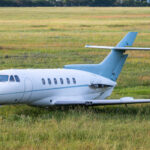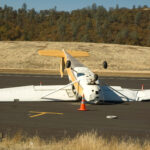Flight Training and Thunderstorms
Every student pilot hears the same advice: avoid, avoid, avoid thunderstorms. While that’s sound instruction, it barely scratches the surface of what real weather decision-making looks like in the airplane. As technology evolves, pilots have access to more weather data than ever before, such as ForeFlight, ADS-B weather, radar overlays, lightning strike maps, turbulence warnings, and more. But tools alone don’t build judgment. During flight training, students need to learn not just what to avoid, but how to evaluate and respond to changing conditions in real time.
Decision-Making Is a Skill—Not Just a Briefing Item
Too often, weather is covered as a box to check in the preflight briefing. But good weather decision-making is a continuous mental process, not a one-time step. Instructors should encourage students to think through scenarios: What would you do if a cell forms across your route? What is your excuse? Where are the nearest VFR airports? What is your plan if unexpected fog rolls into your destination airport? What about the wind? Forecasts can be wrong with either the wind direction or speed. Do you know how to check the crosswind component while you are airborne and the sole manipulator of the controls? By guiding students through “what if” planning on every flight—even on sunny days—you build the habit of staying ahead of the weather.
Key habits to develop during training:
- Review and compare multiple sources (TAFs, METARs, graphical forecasts, radar)
- Practice pre-departure “weather storytelling”: What do you expect to happen enroute?
- Re-check updated conditions in-flight, not just before takeoff
- Learn the limitations of tools like ADS-B weather (delays, gaps, and false security)
- Always have an escape route and don’t let yourself become “boxed in”
Go Fly It: Building Judgment Through Experience
It’s one thing to talk about convective SIGMETs in the classroom. It’s another thing entirely to be flying a cross-country flight when a thunderstorm starts building faster than expected. One of the best ways to learn weather decision-making is through real exposure—safely and intentionally. Under CFI supervision, take flights where storms are nearby but avoidable. Watch how they form, change, and move. See what buildups look like in person and how they compare to the radar image.
Flight training should include real-world flying on marginal days—VFR and not perfect, but not dangerous. Students learn so much more from active decisions than passive lectures. It’s about building weather intuition—not fear.
What If the Weather Changes Enroute? Learning to Act Early
One of the most important lessons a pilot can learn is to make the diversion decision early. Weather rarely forces you to make a snap decision—it gives you warning signs. Teach students to recognize those signs: deteriorating visibility, radar echoes ahead, static in the headset, rising terrain with a lowering ceiling, increasing turbulence. More importantly, teach them to act before they’re forced to.
Questions to teach your students to ask themselves enroute:
- Is this weather moving faster than forecasted?
- Do I have at least two solid alternates within 50 miles?
- What’s the worst-case scenario here—and do I have time/fuel/options if it plays out?
- Am I pushing forward hoping it’ll get better?
Final Thought: Weather Wisdom Isn’t Downloadable
In an age of apps and automation, it’s tempting to think that technology solves everything. But the best weather tool is still pilot judgment, and that only comes with experience, reflection, and honest conversations during flight training. The goal isn’t to avoid weather completely—it’s to understand it well enough to navigate it confidently. When we teach students how to think, not just what to check, we’re giving them tools that will keep them safe for a lifetime of flying.









